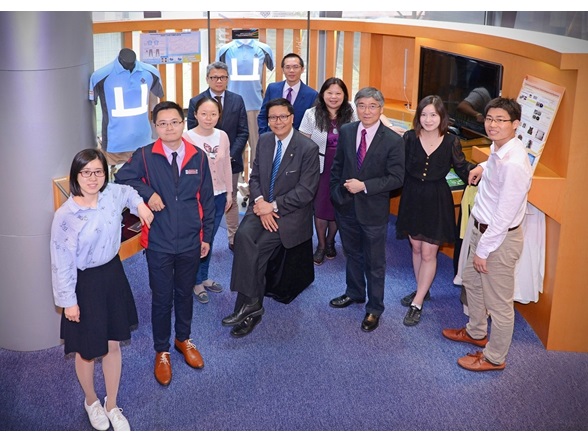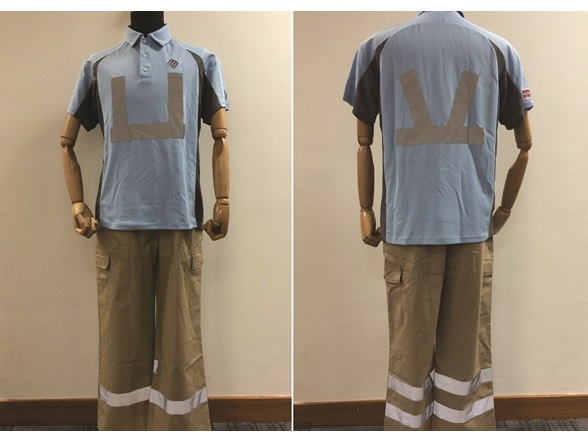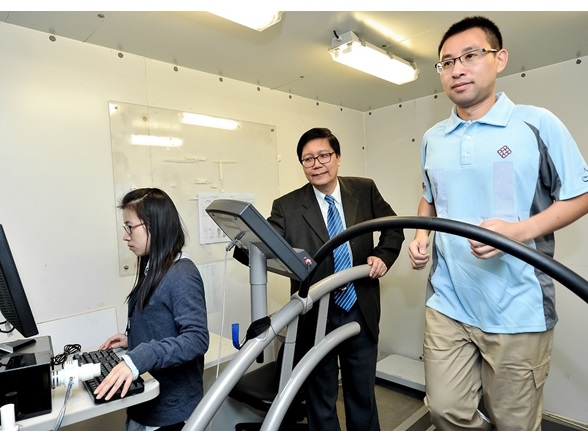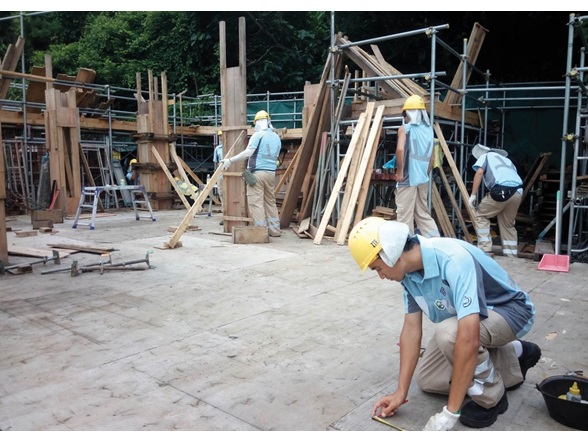Researching for the Common Good
A decade of research efforts for construction safety
According to Hong Kong Observatory, 2019 was the warmest year on record, with the highest temperature of 35.1°C registered on 9 August. While the government consistently urges its citizens to stay in the shade in summer, not all workers have that option, including the unsung hero behind Hong Kong’s economic growth – construction workers. They are at risk of heat stress that not only compromises productivity and increases incident rate, but also leads to serious health hazards, such as heat exhaustion and heat stroke, and even death. As an ongoing effort to improve the wellbeing and safety of construction workers in Hong Kong, Ir Prof. Albert Chan, head of the Department of Building and Real Estate as well as Able Professor in Construction Health and Safety, and his research team have spent the past decade conducting researches on ways to tackle the lurking risk of heat stress among construction workers in the hot and humid summer. Their findings on the optimal work-rest schedule to minimise the occurrence of heat stress were now part of the Construction Industry Council’s guidelines. Their interdisciplinary project to devise the optimal work clothing on construction site gave rise to the multi-award winning Anti-heat Stress Uniform (AHSU), now a standard worker attire for all public works contracts commissioned by the government. Besides Hong Kong, AHSU is also adopted in other parts of the world, benefitting construction workers across the board.
Optimal work-rest schedule
Heat stress is the condition when the human body can no longer get rid of excess heat and regulate its internal temperature. It is caused by environmental factors such as air temperature, humidity, solar radiation and ventilation, as well as the clothing worn and strenuousness of the work. “To reduce the risk of heat stress, our team built a heat stress model to scientifically determine an optimal work-rest schedule that strikes a balance between productivity and worker’s health,” explained Prof. Chan. The team found that a 15-minute break after working for 120 minutes continuously in the morning, and a 20-minute break after working for 115 minutes continuously in the afternoon effectively maximise productivity and minimise the occurrence of heat stress. Such recommendations were adopted in the Guidelines on Site Safety Measures for Working in Hot Weather by the Construction Industry Council (CIC).
Anti-heat Stress Uniform
Another method to prevent heat stress is by improving the heat and moisture performance of workers’ attire. In the past, most local male workers went shirtless in summer to keep themselves cool, yet exposing themselves to harmful ultraviolet rays and other hazards. Prof. Chan and his team partnered with experts in occupational safety, textile science and sports science from universities in the Chinese mainland, Taiwan, Hong Kong and the U.K. to design the optimal clothing for construction workers. The resulting multi-award winning AHSU offers protection against ultraviolet rays and has outstanding breathability and sweat wicking properties. “The uniform is made up of a polo shirt top and cargo pants bottom, both made with advanced fabrics that leverage nanotechnology to wick sweat away from the skin so that they feel drier and more comfortable. At the same time, sweat is evaporated more effectively because of a larger surface area while heat is absorbed from the skin. That is why the uniform also feels cooler,” said Prof. Chan.
In the trial, workers wearing AHSU exhibited lower core temperature, reduced heart rate and better physiological strain index comparing to those in their usual work attire. Over 85% of the subjects preferred AHSU to their regular uniform. To give back to the community, PolyU licensed the technology to CIC for a nominal fee. CIC duly ordered 20,000 sets for its trainees and recommended AHSU as the standard attire on construction sites. In 2017, the Civil Engineering and Development Department also included a term in all public works contracts stating AHSU as the standard uniform for all workers. Within the first year, contractors and organisations in Hong Kong ordered about 100,000 sets. The project has also made international impacts as AHSU was licensed to governmental agencies and manufacturers in Macau, the Middle East and Cambodia, a testimonial on how research can change the world for the better.






